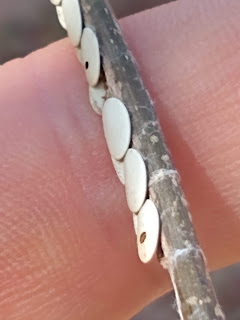"The system of life on this planet is so astoundingly complex that it was a long time before man even realized that it was a system at all and that it wasn’t something that was just there."
Douglas Adams
The elm seeds have dropped their seeds and the drifts have scattered far and wide thanks to the windy last few days. The first of the cotton drifts have also begun, but those seeds have a different strategy, so are not plentiful right now. Humans still rely on plants far more than most of us would like to admit
When the turkey vultures first come back to Corrales for the hot weather, they usually are roosting together. During the summer they will spread out into territories and then only meet up while feeding on a carcass.
Grey squirrels have often been released into the bosque by pest management companies. It makes sense that they would be both worried about people but also stick close to human habitation. Bird feeders (especially those that use cheap bird food full of corn) are ambrosia to a hungry squirrel in a brand new location
Corrales does not have as many muskrats as on the other side of Alameda (Albuquerque side), but in the summer they clearly move north along the clear ditches. While they can remove many cattails they are also surprisingly elusive in part due to their small size. Corrales residents often forget that without the refugia of Sandia pueblo, our village would have much lower animal diversity. The river above the town of Bernalillo is a favorite of beavers, because people do not go there in large numbers.
The many turtles have begun to come out to bask on the sunniest days. Their metabolism requires lots of radiant sun to both move and digest their food. Sometimes they host leeches which can be controlled by drying them out in the sun.
The young whiptails have begun to come out into the open as the days and nights warm up. These speedy lizards prefer open ground to hunt and fight each other. Most are quite young right now, but the bigger ones will be coming out soon. There is low diversity of lizards in the bosque compared with the high desert mesas. The few species we have are very locally abundant, however.

There are many insects starting to grow in the new tree canopies. The aphids are quickly multiplying and the predators of those aphids are also trying to catch up. Other insects are like this weevil, which eats pollen from flowers. This is a willow weevil species and even though it has a tiny mouth, it chews circular holes in the underside of leaves.
Mayflies have begun to appear and will become much more numerous in the next few months, along with all sorts of small, winged annoying insects. They often rest on the sides of stucco houses as they progress from subimago to adult imago stages.
this is some sort of flower beetle, usually these beetles are found on large aster flowers, but those are not out yet that I can see.
Many bugs are not often what they seem. This is a genus of assassin bug, which sucks juices from other bugs instead of plants. People often fear them, but only if they know what they are looking at. Of course, this is why many people kill every bug they can. A much less effective strategy that it would appear.
This tiny wasp could be one of many different species. There are more species of wasps than beetles, and there are a lot of beetle species.
Crab spiders, like this one, are ambush predators. Others in this genus can be superbly camouflaged. I think this a male, as it has the distinctive "boxing gloves" on the front pedipalps.
Spring is the time to plant crops. Corrales is the best place to farm, but many establishments have become too small through constant subdividing within families. The acequia system is also not as maintained as it once was (it takes a village) so many farms are drip irrigated and suffer from salination and compaction as a result. New Mexico. While the state is known for chile, it is also the largest producer of summer onions in the nation. After World War I, grape vineyards in Corrales disappeared, but before that, they were nationally well known.
This is a new leaf from a gambel oak species. Oaks are very speciose, but there are about 100 species in North America. Some species thrive in New Mexico and can be very drought tolerant.
While the honey locust tree is fast growing and rot resistant, it can also suffer from infestations of fungi and insects, especially in old age
Mushrooms and trees are very close interwined. The hidden world of fungi is far more complex than we realize, but the fruiting body, the actual "mushroom" is often found at the base of trees that have too much water.


























































